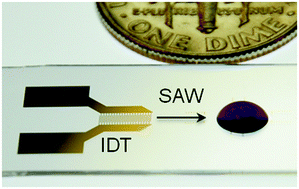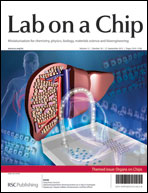Surface acoustic wave microfluidics
Abstract
The recent introduction of surface acoustic wave (SAW) technology onto lab-on-a-chip platforms has opened a new frontier in microfluidics. The advantages provided by such SAW microfluidics are numerous: simple fabrication, high biocompatibility, fast fluid actuation, versatility, compact and inexpensive devices and accessories, contact-free particle manipulation, and compatibility with other microfluidic components. We believe that these advantages enable SAW microfluidics to play a significant role in a variety of applications in biology, chemistry, engineering and medicine. In this review article, we discuss the theory underpinning SAWs and their interactions with particles and the contacting fluids in which they are suspended. We then review the SAW-enabled microfluidic devices demonstrated to date, starting with devices that accomplish fluid


 Please wait while we load your content...
Please wait while we load your content...